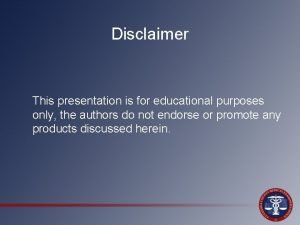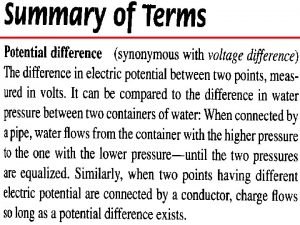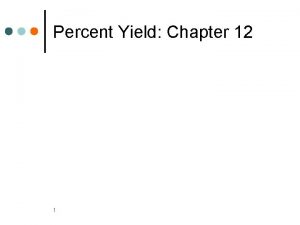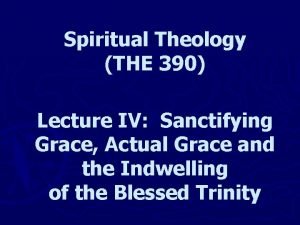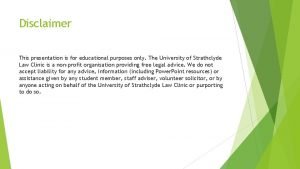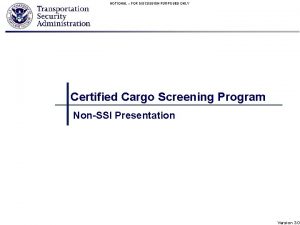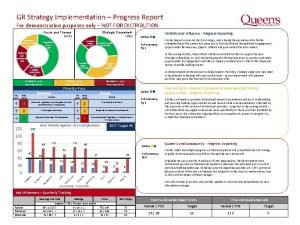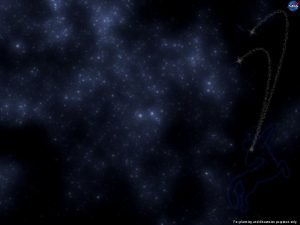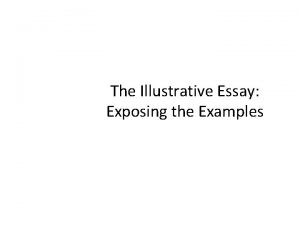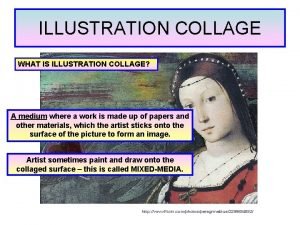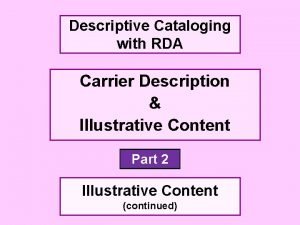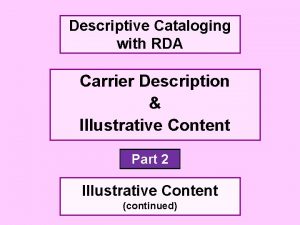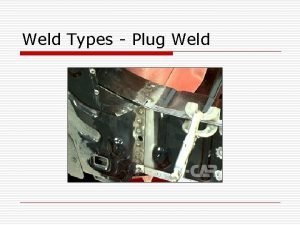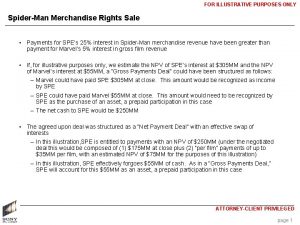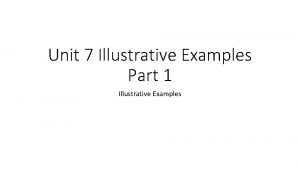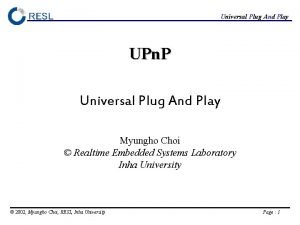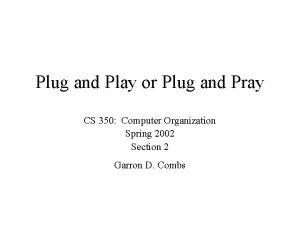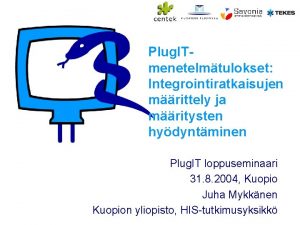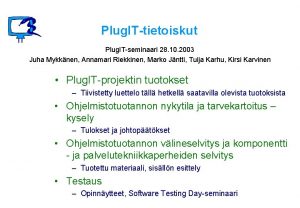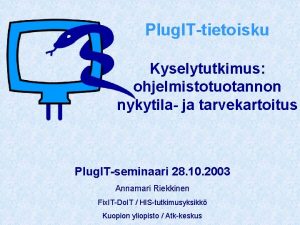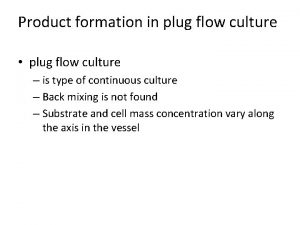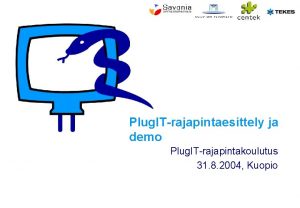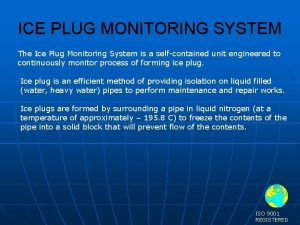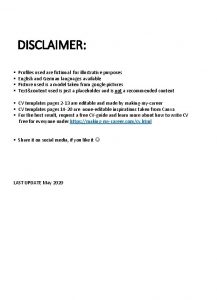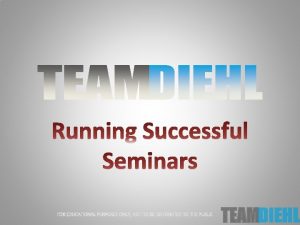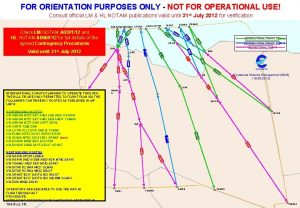Not actual electric plug For illustrative purposes only























- Slides: 23

*Not actual electric plug. For illustrative purposes only. CELLULAR RESPIRATION Chapter 9 Getting energy out of glucose!

Adenosine Triphosphate (ATP) Adenine + ribose + phosphates Energy stored in high energy bonds between phosphates (typically last bond used) RNA Nucleotide! (+ 2 Pi)

ATP = source of energy in cell

Energy (H+/electron) carriers NAD+/NADH, FAD+/FADH 2, NADP+/NADPH Can gain & lose hydrogen and electrons Remember: H for HIGH ENERGY!

Oxidation & Reduction Oxidizing a molecule decreases the amount of energy in the molecule Remove H, remove electrons, add oxygen Reducing a molecule increases the amount of energy in the molecule Add H, add electrons, remove oxygen

Cellular Respiration Releasing energy stored in glucose Used to charge up ATP (for cell to use) Series of reactions (can’t release all at once) Glycolysis, Fermentation (anaerobic repiration) Glycolysis, Krebs Cycle, Electron Transport Chain

Glycolysis Decomposition of glucose to pyruvic acid (pyruvate) Releasing some of the stored energy from glucose Occurs in cytoplasm Requires input of 2 ATP Charges up 2 NADH Charges up 4 ATP Net: 2 NADH & 2 ATP PGAL = G 3 P

INVESTMENT PHASE ENERGY HARVESTED

Aerobic vs. Anaerobic Aerobic = in presence of oxygen Pyruvate travels to mitochondria for cellular respiration More ATP can be generated via Krebs & ETC Anaerobic = no oxygen present Pyruvate used to regenerate NAD+ No additional ATP made, but allows Glycolysis to continue

Cellular Respiration (aerobic)

Mitochondrion

Krebs Cycle Remaining energy extracted from pyruvate Exhale CO 2 as waste Occurs in matrix of mitochondria Generates ATP Generates NADH & FADH 2, will go to Electron Transport Chain to generate ATP

Preprocessing Step (before Krebs) Energy required to transport into mitochondria Oxidation of pyruvate to acetyl-Co. A Generates 1 NADH & 1 CO 2

Krebs Cycle (Citric Acid Cycle) Acetyl-Co. A + OAA → citric acid Citric acid → OAA Series of oxidizing reactions CO 2 exhaled as waste product Generates ATP Generates NADH & FADH 2 OAA rengenerated to accept new acetyl-Co. A

Electron Transport Chain Uses energy from NADH & FADH 2 to generate ATP Occurs in inner mitochondrial membrane Chemiosmosis (proton gradient & ATP synthase) Oxygen is final electron acceptor (generates water)


Substrate Level vs. Oxidative Phosphorylation

ATP Accounting Each NADH → 3 ATP & each FADH 2 → 2 ATP Glycolysis 2 ATP (substrate level phosphorylation) 2 NADH → 4 ATP (oxidative phosphorylation in ETC) costs 2 to transport pyruvate into mitochondria! Pyruvate → acetyl-Co. A 2 NADH → 6 ATP (oxidative phosphorylation in ETC) Krebs Cycle 2 ATP (substrate level phosphorylation) 6 NADH → 18 ATP (oxidative phosphorylation in ETC) 2 FADH 2 → 4 ATP (oxidative phosphorylation in ETC) TOTAL THEORETICAL: 36 ATP (actual ~30 ATP)

Fermentation Anaerobic: in ABSENCE of oxygen No electron acceptor at the end of ETC NADH accumulates, NAD+ depleted Krebs & glycolysis stop w/o NAD+ No ATP production (will cause cell death) Regenerates NAD+ so that glycolysis can continue Fermentation produces NO ATP Glycolysis uses NAD+ to produce 2 ATP Occurs in cytoplasm (alongside glycolysis) 2 types: Alcohol & Lactic Acid

Alcohol Fermentation Occurs in plants, fungi (yeast), & bacteria Produces CO 2, NAD+, and ethyl alcohol (ethanol)

Lactic Acid Fermentation Produces NAD+ and lactic acid (lactate) In animals, most lactate is transported to the liver (converted to glucose when extra ATP available)

Fermented Beverages

Respiration of other molecules Cell can respire proteins and fats when sugars are not readily available Proteins are broken down to create pyruvate, acetyl-Co. A, or other Krebs intermediates; ammonia (NH 3) is generated as waste Fats are broken down into G 3 P and acetyl-Co. A
 Educational purpose only#
Educational purpose only# Two lamps one with a thick filament
Two lamps one with a thick filament Actual-theoretical/actual
Actual-theoretical/actual Definition of sanctifying grace
Definition of sanctifying grace Educational purposes only
Educational purposes only For training purposes only
For training purposes only Draft for discussion purposes only
Draft for discussion purposes only For training purposes only
For training purposes only Training purposes only
Training purposes only Education purposes only
Education purposes only Tsa certified cargo screening program
Tsa certified cargo screening program For demonstration purposes only
For demonstration purposes only For discussion purposes only
For discussion purposes only Illustrative case study example
Illustrative case study example Illustrative writing
Illustrative writing What is illustrative collage
What is illustrative collage Pwc ifrs 17 illustrative financial statements
Pwc ifrs 17 illustrative financial statements Illustrative content
Illustrative content Illustrative case study
Illustrative case study Illustrative content
Illustrative content Illustrative graphics
Illustrative graphics Sadlier unit 1 level d synonyms
Sadlier unit 1 level d synonyms Designing and delivering oral and online presentation
Designing and delivering oral and online presentation Electrical energy formula
Electrical energy formula
